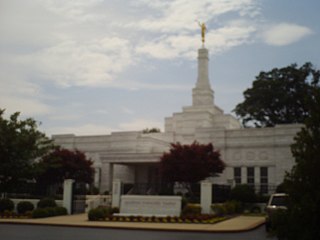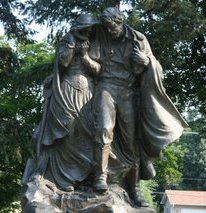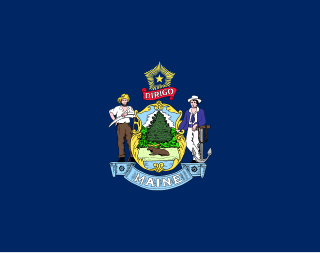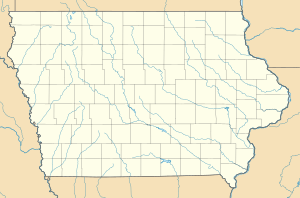
The Church of Jesus Christ of Latter-day Saints in Tennessee refers to the Church of Jesus Christ of Latter-day Saints and its members in Tennessee. The first branch in Tennessee was organized in 1834. It has since grown to 57,422 members in 112 congregations.

The Church of Jesus Christ of Latter-day Saints in Colorado refers to the Church of Jesus Christ of Latter-day Saints and its members in Colorado. The first congregation of the Church in Colorado was organized in 1897. It has since grown to 148,708 members in 310 congregations.

The Church of Jesus Christ of Latter-day Saints in North Carolina refers to the Church of Jesus Christ of Latter-day Saints and its members in North Carolina. In 1894, there were 128 members of the LDS Church. It has since grown to more than 94,000 members in 181 congregations.

The Church of Jesus Christ of Latter-day Saints in Alaska refers to the Church of Jesus Christ of Latter-day Saints and its members in Alaska. The first congregation of the Church in Alaska was organized in 1938. It has since grown to 33,574 members in 81 congregations.

The Church of Jesus Christ of Latter-day Saints in Virginia refers to the Church of Jesus Christ of Latter-day Saints and its members in Virginia. In 1841, there were 80 members of the Church. It has since grown to 96,748 members in 216 congregations.

The Church of Jesus Christ of Latter-day Saints in New York refers to the Church of Jesus Christ of Latter-day Saints and its members in New York. New York was the boyhood home of Joseph Smith, founder of the Latter Day Saint movement. Much of the early history of the now-worldwide LDS Church is centered in upstate New York. The LDS Church was organized on April 6, 1830, in Fayette, New York under the name of the Church of Christ.

The Church of Jesus Christ of Latter-day Saints in Missouri refers to the Church of Jesus Christ of Latter-day Saints and its members in Missouri. The official church membership as a percentage of general population was 1.14% in 2014. According to the 2014 Pew Forum on Religion & Public Life survey, roughly 1% of Missourians self-identify themselves most closely with The Church of Jesus Christ of Latter-day Saints. The LDS Church is the 8th largest denomination in Missouri.

The Church of Jesus Christ of Latter-day Saints in Illinois refers to the Church of Jesus Christ of Latter-day Saints and its members in Illinois. The official church membership as a percentage of general population was 0.44% in 2014. According to the 2014 Pew Forum on Religion & Public Life survey, less than 1% of Illinoisans self-identify themselves most closely with The Church of Jesus Christ of Latter-day Saints. The LDS Church is the 13th largest denomination in Illinois.

The Church of Jesus Christ of Latter-day Saints in Ohio refers to the Church of Jesus Christ of Latter-day Saints and its members in Ohio. The official church membership as a percentage of general population was 0.52% in 2014. According to the 2014 Pew Forum on Religion & Public Life survey, roughly 1% of Ohioans self-identify themselves most closely with The Church of Jesus Christ of Latter-day Saints. The LDS Church is the 14th largest denomination in Ohio.

The Church of Jesus Christ of Latter-day Saints in Pennsylvania refers to the Church of Jesus Christ of Latter-day Saints and its members in Pennsylvania. Joseph and Emma Smith lived in Northern Pennsylvania near the Susquehanna River just prior to the organization of the Church of Christ. Much of the translation of the Book of Mormon and revelation of the priesthood occurred here during that time.

The Church of Jesus Christ of Latter-day Saints in Nebraska refers to the Church of Jesus Christ of Latter-day Saints and its members in Nebraska. The official church membership as a percentage of general population was 1.29% in 2014. According to the 2014 Pew Forum on Religion & Public Life survey, roughly 1% of Nebraskans self-identify themselves most closely with the LDS Church. The LDS Church is the 6th largest denomination in Nebraska.

The Church of Jesus Christ of Latter-day Saints has had a presence in the state of Indiana since 1831. The official church membership as a percentage of general population was 0.68% in 2018. According to the 2014 Pew Forum on Religion & Public Life survey, roughly 1% of Hoosiers self-identify themselves most closely with The Church of Jesus Christ of Latter-day Saints. The LDS Church is the 13th largest denomination in Indiana.

The Church of Jesus Christ of Latter-day Saints in Maryland refers to the Church of Jesus Christ of Latter-day Saints and its members in Maryland. The official church membership as a percentage of general population was 0.72% in 2014. According to the 2014 Pew Forum on Religion & Public Life survey, roughly 1% of Marylanders self-identify themselves most closely with The Church of Jesus Christ of Latter-day Saints. The LDS Church is the 8th largest denomination in Maryland.

The Church of Jesus Christ of Latter-day Saints in Minnesota refers to the Church of Jesus Christ of Latter-day Saints and its members in Minnesota. The official church membership as a percentage of general population was 0.59% in 2014. According to the 2014 Pew Forum on Religion & Public Life survey, roughly 1% of Minnesotans self-identify themselves most closely with the LDS Church. The LDS Church is the 12th largest denomination in Minnesota.

The Church of Jesus Christ of Latter-day Saints in Massachusetts refers to the Church of Jesus Christ of Latter-day Saints and its members in Massachusetts.

The Church of Jesus Christ of Latter-day Saints in Wisconsin refers to the Church of Jesus Christ of Latter-day Saints and its members in Wisconsin. The official church membership as a percentage of general population was 0.44% in 2014. According to the 2014 Pew Forum on Religion & Public Life survey, less than 1% of Wisconsinites self-identify themselves most closely with the LDS Church. The LDS Church is the 10th largest denomination in Wisconsin.

The Church of Jesus Christ of Latter-day Saints in Kansas refers to the Church of Jesus Christ of Latter-day Saints and its members in Kansas. The first congregation of the church in Kansas was organized in 1895. As of 2022, it has grown to 39,356 members in 74 congregations.

The Church of Jesus Christ of Latter-day Saints in West Virginia refers to the Church of Jesus Christ of Latter-day Saints and its members in West Virginia. The official church membership as a percentage of general population was 0.92% in 2014. According to the 2014 Pew Forum on Religion & Public Life survey, roughly 2% of West Virginians self-identify themselves most closely with The Church of Jesus Christ of Latter-day Saints. The LDS Church is the 9th largest denomination in West Virginia.

The Church of Jesus Christ of Latter-day Saints in South Dakota refers to the Church of Jesus Christ of Latter-day Saints and its members in South Dakota. The official church membership as a percentage of general population was 1.27% in 2014. According to the 2014 Pew Forum on Religion & Public Life survey, less than 1% of South Dakotans self-identify themselves most closely with the LDS Church. The LDS Church is the 8th largest denomination in South Dakota.

The Church of Jesus Christ of Latter-day Saints in Maine refers to the Church of Jesus Christ of Latter-day Saints and its members in Maine. Official church membership as a percentage of general population was 0.81% in 2014. According to the 2014 Pew Forum on Religion & Public Life survey, roughly 2% of Mainers self-identify themselves most closely with the LDS Church.






















